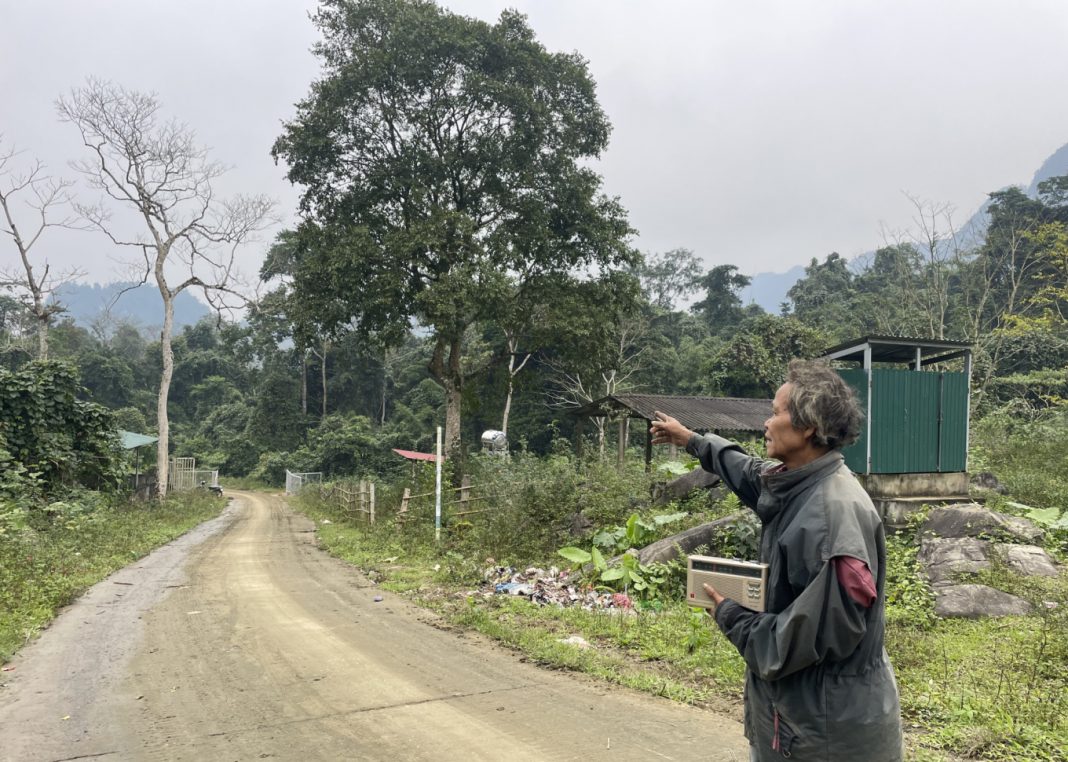Deep in the mountains of Phong Nha – Ke Bang National Park in Quang Binh Province, central Vietnam, small huts and cave dwellings are scattered every few kilometers.
At Chim Cave, a two-hour trek from Tan Trach Commune, Bo Trach District, what appears to be remnants of a primitive lifestyle is actually the home of Dinh Ne, 91, and Y Ru, 93.
Outside their dwelling, hunting and foraging tools hang from rocky walls, while inside, a bamboo bed is raised high to avoid wild animals. Below the entrance, small plots of land provide vegetables and fruits, while a nearby stream serves as a water source. The couple has spent most of their lives in caves, and this one has been their main home for the past several years.
“In March, when the weather warms, I will return to the forest,” Ne said in the Arem language as he sat with his wife in their resettlement home in Tan Trach.
A life deeply tied to the forest
The exact origins of the Arem people’s cave-dwelling traditions remain unknown to the couple. They only recall being raised in the caves from an early age.
“During wartime bombings, the Arem people would flee deeper into the forest,” Dinh Ne recounted.
In 1956, border guards in Quang Binh discovered the Arem ethnic group living in isolated, steep limestone caves, leading a primitive existence – wearing clothes made from tree bark, hunting, and foraging, often consuming food raw.
After the war, the government attempted to resettle the Arem people into villages. However, their deep-rooted connection to the forest made adaptation difficult. Epidemics and misfortunes were often attributed to the wrath of the “forest god,” prompting them to return to the wilderness. It was not until 2004 that most Arem people permanently left cave life when a stable village was established for them.
Yet, for Dinh Ne, modern life has remained a challenge. He and his wife rarely left the forest in their younger years, only visiting the village for rice and salt. Even as their health declined, they continued to spend most of the year, March to October, living in the cave, returning to the village only occasionally.
The couple built a dozen huts along the Ruc Ca Roong stream, where Ne would fish while Y Ru tend to their small farm, protecting it from wild boars.
“There’s plenty of good food in the forest. Fish and shrimp come out, and a lot of bamboo shoots grow. Back in the village, we only have rice with salt and chili,” Y Ru said.
Having spent a lifetime in the wilderness, they find forest life more comfortable and secure. Their deep knowledge of edible plants and natural medicine allows them to survive with minimal supplies. Besides using nets and traps, they sometimes crush red cardamom leaves to stun fish, making them easy to collect.

Adapting to village life
Dinh Ne and Y Ru’s relationship follows the Arem custom of levirate marriage. He was originally her brother-in-law, but after both lost their spouses, they came to live together.
As they age, health challenges have made it harder for them to continue living in the caves.
“My legs started aching last winter, and it’s hard to move,” Ru said. “But every morning, he asks me to go into the forest with him.”
“Even now, he climbs steep rocks faster than young people,” she remarked. “In his youth, he was known for his strength, once carrying 150 kilograms of wood on his back.”
According to Nguyen Van Dai, an official of Tan Trach Commune, Ne spends the day in a hut near the stream searching for food. At night, if the weather is bad or he has caught plenty of food, he returns to the cave.
“A few years ago, we had to send a team into the forest just to bring Ne back so he could register for his citizen ID,” Dai said.
The couple’s son, Dinh Hoe, has been increasingly concerned about their declining health. Last July, Ne suffered from swollen joints, and traditional remedies from the forest failed to help. After days without seeing him, his family set out in search and had to carry him back on a stretcher.
After his hospital discharge, Ne longed to return to the forest so he did. By September, floodwaters isolated the cave where he and his wife were staying. With no way out, they survived on cassava for days.
“At that time, some of us had to carry rice on our heads and swim across the swollen stream to bring food to them,” recalled Dinh Chai, vice chairman of Tan Trach Commune, and the first Arem person to earn a university degree.
According to Chai, many Arem people still prefer life in the forest. During the summer, families often build huts along the Ruc Ca Roong stream, where they bathe, fish, and gather fruit. At night, they light campfires, drink rice wine, and sing folk songs.

A changing community
From a group of just 18 individuals discovered in 1956, the Arem population in Tan Trach has now grown to 66 households with 188 members. Infrastructure improvements such as concrete roads, electricity, and internet access have transformed the community, once considered Vietnam’s last uncontacted ethnic group.
However, economic challenges remain. The core area of Phong Nha – Ke Bang National Park offers limited agricultural land, restricting farming opportunities. Traditional methods and wildlife disturbances continue to impact livelihoods.
In recent years, the government and various organizations have worked to improve living conditions. Each Arem household receives an annual forest protection stipend of about VND25 million (US$981).
“While these funds cover basic expenses for most of the year, limited knowledge of savings and financial planning keeps them vulnerable to hunger,” Dai said, noting that 80% of households remain classified as poor.
Although modern conveniences have reached their village, Ne still longs for the wilderness. His resettlement home is sparse, with only a few old clothes, a half-eaten pot of rice, and hardened cassava roots—a contrast to the bamboo shoots he gathered the day before.
“I’m old, my legs ache, and I can’t go into the forest anymore. But he will probably still go,” Ru said, glancing at her husband.
Ne sighed. His children forbid him from returning to the cave though.
“They can’t afford to carry me home on a stretcher again,” the 91-year-old man admitted.





